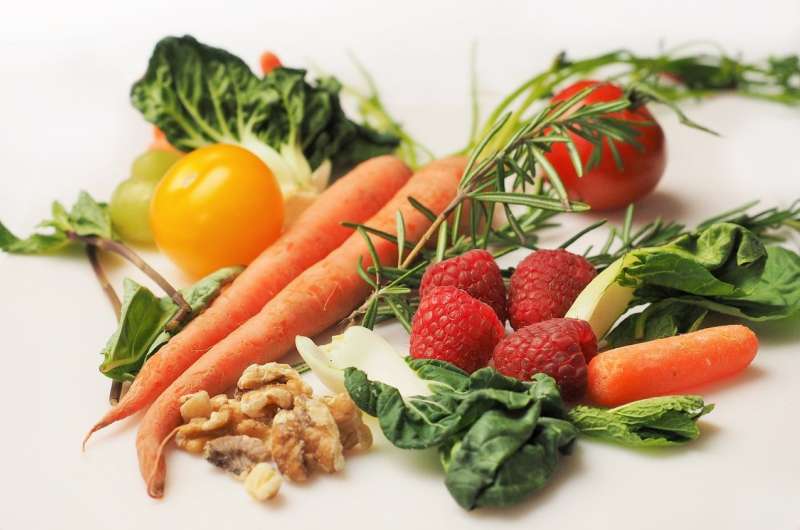by Dr. Mark R. Corkins, American Academy Of Pediatrics

Q: How much fruit, vegetables, and protein do my kids really need every day?
A: There's a lot of information out there about proper nutrition and what to avoid. It can get confusing, especially for parents who need to feed their children's growing bodies. Here are some tips to keep in mind when planning and preparing meals for your family.
Your children should consume a variety of foods from the five major food groups. Each food group supplies important nutrients, including vitamins and minerals. The old saying about needing a balanced diet is very true. Here's a quick and easy nutrition guide for most children who are over age 1:
- Vegetables: 3-5 servings per day. A serving may consist of 1 cup of raw leafy vegetables or 1/2 cup of other vegetables, raw or cooked. Serve a colorful variety of vegetables and eat plenty yourself. Your child will be more likely to consume vegetables if you model good eating habits.
- Fruits: 2-4 servings per day. A serving can consist of 1/2 cup of sliced fruit or a medium-size whole fruit, like an apple, banana or pear.
- Bread, cereal, or pasta: 6-11 servings per day. Each serving should equal one slice of bread, 1/2 cup of rice or pasta, or 1 ounce of cereal.
- Protein foods: 2-3 servings of 2-3 ounces of cooked lean meat, poultry, or fish per day. There are also proteins in addition to meat. A serving in this group also can consist of 1/2 cup of cooked dry beans, one egg, or 2 tablespoons of peanut butter for each ounce of lean meat.
- Dairy products: 2-3 servings per day of 1 cup of low-fat milk or yogurt, or 1 1/2 ounces of natural cheese.
Your children need protein so their bodies can grow and function properly. This includes building new tissues and producing antibodies that help fight infections. Without essential amino acids (the building blocks of protein), children would be much more susceptible to serious diseases. Protein-rich plants—such as beans and peas (legumes), grains, seeds and nuts—can be used as valuable sources of protein. Other protein-rich foods include meat, fish, milk, yogurt, cheese and eggs. These animal products contain high-quality protein and a full array of amino acids.
Keep in mind, however, that while red meat and shellfish are rich in protein and an important source of iron, they can also be high in fat and cholesterol as well. So, your children should consume them only in moderate amounts. Select lean cuts of meat and trim the fat before cooking. Likewise, remove skin from poultry before serving.
Humans cannot live without fats. Although often portrayed as bad, they are actually essential for some body functions. They are a concentrated source of energy, providing essential fatty acids that are needed for a variety of bodily processes (metabolism, blood clotting and vitamin absorption).
However, high fat intake—particularly a diet high in saturated fats—can cause problems. Saturated fats are found in fatty meats (such as beef, pork, ham, veal and lamb) and many dairy products (whole milk, cheese and ice cream). They can contribute to the buildup of plaque in blood vessels and lead to heart disease later in life. A diet rich in saturated fats also can increase blood cholesterol, particularly in people who have inherited a tendency toward high cholesterol levels.
Although they have some saturated fats, dairy products are still important in a balanced diet because of the crucial calcium, phosphate and vitamin D they supply.
As a general guideline, fats should make up less than 30% of the calories in your child's diet. No more than about 1/3 or less of those fat calories should come from saturated fat, with the rest coming from unsaturated (polyunsaturated or monounsaturated) fats. These healthier fats include safflower, sunflower, soybean and olive oils.
It's also important to limit the amount of sugar in your children's diet. Many children consume sugar in large amounts, usually at the expense of healthier foods.
Table salt, or sodium chloride, may improve the taste of certain foods, but researchers have found a relationship between salt in the diet and high blood pressure in some people. The habit of using extra salt is a learned one. So, serve your child foods low in salt and try using herbs, spices, or lemon juice for flavor.
Explore further
©2021 Tribune Content Agency, LLC.
Citation: Ask a pediatrician: How much fruit, vegetables, and protein do children need? (2021, October 18) retrieved 19 October 2021 from https://ift.tt/3DRZrQ3
This document is subject to copyright. Apart from any fair dealing for the purpose of private study or research, no part may be reproduced without the written permission. The content is provided for information purposes only.
"fruit" - Google News
October 19, 2021 at 03:10AM
https://ift.tt/3DRZrQ3
Ask a pediatrician: How much fruit, vegetables, and protein do children need? - Medical Xpress
"fruit" - Google News
https://ift.tt/2pWUrc9
https://ift.tt/3aVawBg
Bagikan Berita Ini














0 Response to "Ask a pediatrician: How much fruit, vegetables, and protein do children need? - Medical Xpress"
Post a Comment